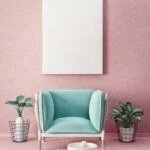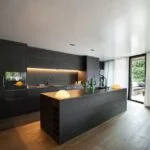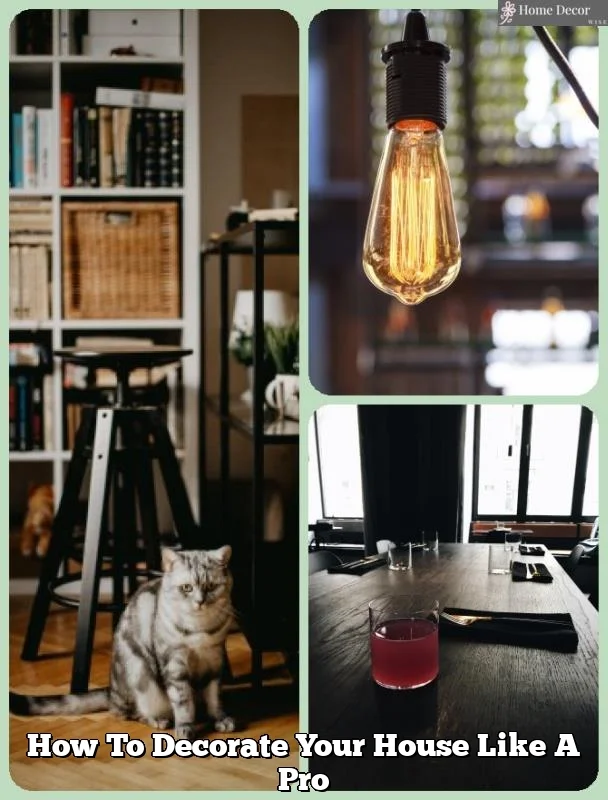Home decor plays a crucial role in creating a space that truly feels like home. It is not just about making your house look beautiful; it is about establishing a welcoming and aesthetically pleasing environment that reflects your personal style and aligns with your lifestyle.
Whether you are moving into a new place or simply looking to refresh your current home, decorating can be an exciting and fulfilling endeavor. This article will guide you through the process of transforming your space into one that speaks to who you are and brings you joy.
The first step in embarking on your home decoration journey is assessing your space and setting a budget. Before diving into the world of interior design, take some time to evaluate the size, layout, and existing furniture in your home. By understanding the physical characteristics of your space, you can make informed decisions when it comes to selecting decor pieces. Additionally, establishing a budget allows you to set realistic expectations and prioritize where to allocate your resources.
Once you have evaluated your space and set a budget, the next step is identifying your style and finding inspiration. There are countless interior design styles to explore, ranging from minimalist and modern to rustic and eclectic. By exploring different styles through magazines, online platforms, and social media, you can begin to define what resonates with you personally. Seek inspiration from various sources to develop a clear vision of how you want your space to look and feel.
From there, the journey continues with choosing a color scheme, arranging furniture effectively, selecting statement pieces, incorporating textures, lighting up the room strategically, adding finishing touches with decorative accessories, and reflecting on the transformation of your space. Each step is essential in creating an atmosphere that embodies both beauty and functionality.
In this article series, we will walk you through each stage of the home decoration process with informative tips and practical advice. By following these guidelines, you can turn any house into a personalized sanctuary that reflects both your individuality and aesthetic preferences. Get ready to embark on an exciting journey of transforming your space and creating a home that truly resonates with you.
Assessing your space and setting a budget
To begin assessing your space, start by taking measurements of each room. This will give you an accurate understanding of the size of the space and help you plan for furniture placement. Consider factors such as windows, doors, and architectural features that may impact the layout of the room. By evaluating these aspects, you can make informed decisions about how to arrange furniture and which pieces will fit best in each room.
Next, take stock of any existing furniture or decor items that you plan to keep or incorporate into your new design. Assess their condition and consider if they align with your desired aesthetic. If some items do not fit with your vision or are in disrepair, it may be time to let them go and make space for new pieces.
Setting a budget is essential to ensure that you don’t overspend on your home decoration project. Determine how much money you are willing to allocate for each room or aspect of your decor plan. Be realistic about what you can afford and prioritize where you want to invest more money versus where you can cut costs.
Remember that decorating your home doesn’t have to break the bank – there are plenty of cost-effective ways to achieve a beautiful outcome. Research affordable options for furniture and decor items, consider DIY projects, or explore secondhand markets for unique finds at lower prices.
By thoroughly assessing your space and setting a budget at the beginning of your home decor journey, you will have a solid foundation from which to proceed with confidence.
| Assessing Your Space | Setting a Budget |
|---|---|
| – Take measurements of each room | – Determine how much money you are willing to allocate for each room or aspect of your decor plan. |
| – Consider factors such as windows, doors, and architectural features that may impact the layout | – Prioritize where you want to invest more money versus where you can cut costs. |
| – Evaluate existing furniture and decor items that you plan to keep or incorporate into your new design | – Look for cost-effective options, consider DIY projects, or explore secondhand markets. |
Identifying your style and inspiration
When it comes to decorating your home, it’s important to establish your personal style and find inspiration to bring your vision to life. Identifying your style will help guide your choices in furniture, colors, and overall decor. Whether you lean towards minimalist, modern, rustic, or any other interior design style, knowing what resonates with you will ensure a cohesive and visually pleasing result.
To begin the process of identifying your style and finding inspiration, start by exploring different interior design styles. Look through magazines, browse online platforms such as Pinterest or Instagram, and even visit showrooms or model homes. Pay attention to the styles that catch your eye and align with your taste. Take note of specific elements such as color palettes, furniture arrangements, or decorative accents that appeal to you.
Once you have gathered some ideas and inspiration, create a mood board or folder where you can compile images that represent your desired aesthetic. This visual representation will serve as a reference throughout the home decor process. It can also help you communicate your preferences to professionals if you decide to seek their assistance.
Aside from external sources of inspiration, don’t forget to consider your own lifestyle and personality when identifying your style. Think about what makes you feel comfortable and relaxed in a space. Consider if you prefer clean lines or intricate details, bold hues or soft neutrals. Your home should be an extension of yourself and reflect who you are.
| Interior Design Styles | Description |
|---|---|
| Minimalist | A clean and simple style characterized by uncluttered spaces, neutral colors, and a focus on function. |
| Modern | A style that embraces sleek lines, minimal embellishments, and a mix of materials such as glass, metal, and concrete. |
| Rustic | A warm and natural style that incorporates elements of nature, such as wood and stone, with cozy textures and earthy tones. |
Choosing a color scheme
- Understand the impact of colors: Colors have the power to influence our emotions and perceptions. Warm colors like red, orange, and yellow tend to create a cozy and energetic atmosphere, while cool colors like blue, green, and purple evoke calmness and tranquility. Neutrals like white, beige, and gray provide a versatile backdrop for other elements in the room.
- Explore different color palettes: There are various color combinations that can work well in different rooms depending on your personal style and preferences. Monochromatic schemes involve using different shades of a single color for a sophisticated look. Complementary schemes use colors opposite each other on the color wheel to create contrast. Analogous schemes involve using colors next to each other on the color wheel for a harmonious feel.
- Consider the purpose of each room: Think about how you want each room to feel or function before selecting a color scheme. For example, if you want your bedroom to be a peaceful sanctuary, opt for calming hues like soft blues or pale purples. If you want your living room to feel lively and vibrant, consider using warm tones like oranges or yellows.
- Test paint samples: It’s always recommended to test out paint colors before committing to one for an entire room. Purchase small paint samples and apply them on different walls in your space to see how they look under various lighting conditions throughout the day. This will help you visualize how the colors will actually appear once painted on all four walls.
- Coordinate with existing furniture and decor: Take into account any existing furniture pieces or decor items that you plan to keep in the room. Consider how the colors you choose will coordinate or contrast with these items to ensure a cohesive and harmonious look.
By carefully selecting a color scheme that aligns with your personal style and the desired ambiance of each room, you can create a beautifully coordinated and visually appealing home.
Furniture arrangement and placement
Tips for arranging furniture based on the room’s flow and purpose
When it comes to furniture arrangement and placement, it is important to consider the flow of the room and its purpose. Start by evaluating the size and layout of the space you are working with. Take measurements and create a floor plan to guide your furniture placement decisions.
Consider how you use the room and what activities typically take place there. For example, in a living room, you may want to create conversation areas by arranging seating facing each other. In a dining room, ensure that there is enough space for chairs to be pulled out comfortably from the table.
Another tip is to arrange furniture in a way that promotes easy movement throughout the space. Leave enough room between pieces for people to walk without feeling cramped. You may also want to consider traffic patterns, such as ensuring that pathways are clear between doorways or allowing easy access to key features like windows or fireplace.
Utilizing space efficiently and ensuring comfortable movement
In smaller spaces or rooms with unconventional layouts, it is important to utilize space efficiently while still prioritizing comfort and functionality. Consider multi-purpose furniture pieces that can serve multiple functions or provide hidden storage.
Experiment with different arrangements before settling on one. As you move your furniture around, evaluate if there are any empty corners or unused spaces that could benefit from additional pieces like accent chairs or side tables.
Additionally, remember to leave enough space around furniture for comfortable movement. Avoid overcrowding a room with too many large pieces or cluttering pathways with unnecessary obstacles.
Considering focal points when arranging furniture
When arranging furniture, it is important to consider focal points within the room. Focal points can be architectural features like a fireplace or large windows, or even statement pieces like an artwork or unique piece of furniture.
Arrange your larger pieces of furniture around these focal points to draw attention to them and create a visually balanced space. For example, if you have a fireplace, arrange your seating to face it and create a cozy gathering spot.
Keep in mind that focal points can vary for different rooms. In a bedroom, the bed is often the main focal point, while in a dining room, the table takes center stage. When arranging furniture, take into consideration the purpose of the room and what elements should be highlighted to make it visually appealing and functional.
Selecting statement pieces
One way to select statement pieces is by focusing on unique furniture. Consider investing in a standout piece like a bold-colored sofa or an intricately designed coffee table. These items can serve as conversation starters and instantly enhance the visual appeal of your room.
Additionally, look for artwork that speaks to you and complements the color scheme and theme of the room. Whether it’s a large canvas painting or a collection of smaller framed prints, art can bring personality and creativity into your space.
In addition to furniture and artwork, incorporating statement pieces through decorative accessories can make a big impact. Look for eye-catching accents such as vases, sculptures, or interesting mirrors that reflect your personal taste. These smaller items can be easily swapped out or rearranged to keep your space fresh and dynamic. Don’t be afraid to mix different textures, materials, and styles when selecting statement accessories – this can add visual interest and create a more eclectic and unique look.
Remember, while selecting statement pieces is important for creating a visually appealing home, balance is key. Avoid overcrowding rooms with too many focal points as it may overwhelm the space. Instead, focus on strategic placement of these special items while considering the overall flow of the room. By carefully curating statement pieces that resonate with you, you can transform your home into a reflection of your personality and create spaces that truly inspire joy.
- Choose unique furniture as focal points
- Invest in captivating artwork
- Look for eye-catching decorative accessories
- Avoid overcrowding by maintaining balance
Adding depth and texture
One way to introduce texture into your home is through the use of fabrics. Consider adding throw pillows, blankets, or rugs that have different textures such as velvet, fur, or knit. These pieces not only add visual interest but also provide a cozy feeling to your space. Additionally, you can experiment with different patterns and prints to create contrast and depth.
Another way to incorporate texture is through the use of wallpaper or textured paint. These options can add depth and visual interest to your walls without overwhelming the space. From subtle textures like grasscloth to more dramatic options like beaded wallpapers, there are endless possibilities for transforming your walls into focal points within your rooms.
In addition to fabrics and wall treatments, incorporating different materials in furniture and decor can also add texture. Consider using wood furniture with unique grain patterns or metal accents with varied finishes. Mixing materials such as glass, leather, or stone can also provide additional tactile elements that enhance the overall texture of your space.
By adding depth and texture to your rooms, you can create a layered look that adds sophistication and intrigue to your home decor. Remember to balance these elements appropriately by considering scale and proportion. With careful selection of fabrics, wallpapers, furniture materials, and decorative accessories, you can transform any room into a visually captivating space that evokes both comfort and style.
Incorporating lighting
Utilizing different light sources
To create a well-balanced and dynamic lighting scheme, it’s important to utilize different light sources. Natural lighting should be maximized through proper window treatments and the strategic placement of mirrors to reflect sunlight. Ambient lighting, such as overhead fixtures or wall-mounted sconces, provides overall illumination for the room. Task lighting is essential in areas where specific activities are performed, such as desk lamps for workspaces or reading lights near seating areas.
Choosing suitable fixtures
The type of fixtures you choose can greatly impact the style and ambiance of your space. Consider the overall theme and aesthetic of your home when selecting fixtures. For example, modern spaces may benefit from sleek and minimalistic designs, while rustic spaces could incorporate vintage-inspired fixtures with warm finishes. Additionally, pay attention to the scale of your fixtures to ensure they are proportionate to the size of the room.
Utilizing lighting design techniques
Beyond simply choosing fixtures, there are various techniques you can employ to enhance your lighting design. Layering light is one effective technique that involves using a combination of ambient, task, and accent lighting to create depth and visual interest. Another technique is using dimmers to adjust the brightness level based on different situations or moods. Directional lighting can also be utilized to highlight architectural features or artwork within a space.
By incorporating appropriate lighting sources, choosing suitable fixtures, and utilizing effective design techniques, you can create a well-lit home that enhances both functionality and aesthetics. Lighting should not be overlooked as it has the power to transform any space into a warm and inviting environment.
Final touches and finishing details
One way to add dimension and character to your space is by incorporating decorative accessories. Plants can bring life and freshness into any room while also purifying the air. Choose plants that thrive in the specific lighting conditions of each room, such as low-light plants for areas with little sunlight.
Additionally, consider adding curtains or blinds to windows for privacy or to control the amount of natural light entering the room. Curtains can also be used to add color, texture, or pattern to complement your overall design scheme.
Wall art is another effective way to bring personality and style into a room. Whether you choose paintings, photographs, or prints, art can create visual interest and serve as a focal point. Consider selecting pieces that resonate with you personally or that convey a particular theme or emotion you want to evoke in the space.
When it comes to final touches, paying attention to small details is crucial. Ensure that all hardware matches throughout the room, such as doorknobs, drawer pulls, light switch covers, and outlet covers. Coordinating these elements can give your space a polished and cohesive look.
Conclusion
In conclusion, the process of decorating your home is not only about creating a visually appealing space but also about reflecting your own personal style and creating a space that aligns with your lifestyle. Throughout this journey of home decor, you have learned to assess your space and set a budget, identify your style and inspiration, choose a color scheme, arrange furniture effectively, select statement pieces, add depth and texture, incorporate lighting strategically, and add final touches and finishing details.
By following these steps, you have successfully transformed your living environment into a welcoming and aesthetically pleasing sanctuary. Each decision made along the way has allowed you to curate a home that truly reflects your personality and brings you joy. Whether you prefer minimalist simplicity or rustic charm, there are countless interior design styles to explore and adapt to fit your own unique vision.
Ultimately, the beauty of home decor lies in the fact that it is an ongoing journey. Your tastes may evolve over time, leading you to make further changes or updates to your space. The key is to always stay true to yourself and allow your home to be a reflection of who you are. Remember that creating a harmonious atmosphere involves not just choosing colors and furniture but also paying attention to small details that enhance the overall aesthetic.
So celebrate the transformation of your space and take pride in creating a home that is truly yours. As you relax in your thoughtfully designed surroundings, may it serve as a constant reminder of the importance of surrounding yourself with beauty and creating an environment that brings you happiness every day.
Frequently Asked Questions
Where do I start when decorating my house?
When it comes to decorating your house, a good place to start is by determining your personal style and the overall theme or aesthetics you want to achieve. Consider your preferences in terms of colors, patterns, and furniture styles.
Look for inspiration from various sources such as interior design magazines, websites, or social media platforms like Pinterest. Gather ideas that resonate with you and create a mood board or folder to help visualize the look you desire.
How do I figure out how to decorate my house?
Figuring out how to decorate your house requires careful planning and consideration of several factors. Begin by evaluating the existing space and taking note of its features such as architectural elements, natural light, and room dimensions. Think about the functionality of each room and how you envision yourself using the space.
This will guide your decisions on furniture arrangement, storage solutions, and decorative accents. Additionally, take into account any specific needs or considerations such as accommodating pets or children.
What to do first when decorating a house?
The first step when decorating a house is typically decluttering and organizing the space. Prioritize getting rid of unnecessary items and sorting belongings into designated areas before starting any major changes. This will not only create a clean canvas but also provide a clearer understanding of what you have to work with in terms of available space.
After decluttering, it’s essential to establish a budget for your project and create a detailed plan or timeline outlining the different stages of decoration. With this framework in place, begin tackling specific tasks like painting walls, installing desired lighting fixtures, or selecting key furniture pieces based on your overall vision for each room.

I’m thrilled to be your companion on this exciting journey through the world of home decor and design. With a passion for turning houses into homes and a keen eye for the finer details, I’m here to help you transform your living spaces into beautiful, functional, and meaningful havens.





